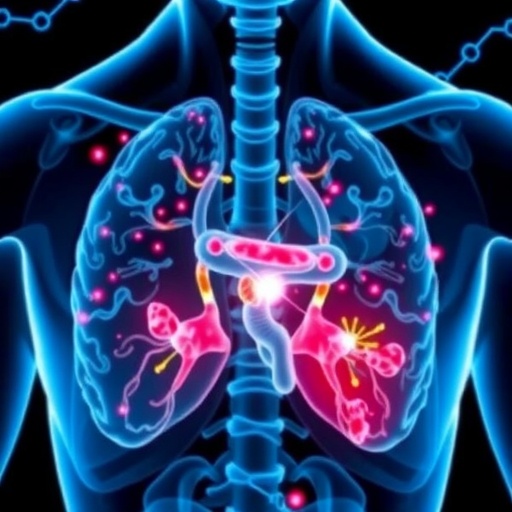In recent years, the field of medicine has increasingly recognized the critical role of shared decision-making (SDM) between clinicians and patients, particularly in complex areas such as valvular heart disease. The work led by Lauck, Gulati, and Lewis, among others, presents a pioneering effort to outline a roadmap for the implementation of shared decision-making in this specific domain. The discourse around SDM is not just an academic exercise; it is vital for improving patient outcomes and ensuring that healthcare practices align with patient values and preferences.
The importance of shared decision-making in valvular heart disease arises from the nature of the condition itself, which often presents multiple treatment options. Patients face choices that vary significantly in terms of risks, benefits, and potential outcomes. Thus, the need for a structured process that empowers patients to take an active role becomes paramount. The implications of these recommendations extend not only to clinical practice but also to the educational framework that surrounds healthcare providers.
Lauck and colleagues emphasize the necessity of developing clear guidelines that delineate how SDM can be effectively implemented in clinical settings. These guidelines are backed by evidence from both clinician experiences and patient feedback, indicating a collaborative approach is not only desirable but also imperative. Such an approach ensures that treatment modalities chosen are not only clinically appropriate but also resonate with the patient’s personal health goals and life circumstances.
Critically, the research highlights the need for training programs that equip healthcare professionals with the skills required for facilitating shared decision-making. The tools and strategies healthcare professionals employ during consultations can either enhance or hinder the decision-making process. This reinforces that a one-size-fits-all approach to treatment is neither practical nor effective, especially in complex cases such as valvular heart disease. Educational initiatives should promote competencies in communication, empathy, and patient engagement, which are pivotal in fostering an environment conducive to shared decision-making.
Furthermore, the study points to the integration of decision aids that can be used during consultations to improve clarity for patients. These aids can take various forms, including visual diagrams or digital platforms that simplify complex medical information into more digestible components. Decision aids have shown promise in helping patients navigate choices by presenting probabilities and outcomes in ways that are easier to understand, thus enabling informed decision-making.
The authors also stress the importance of multidisciplinary collaboration in implementing shared decision-making. When healthcare providers from various disciplines work together, they bring unique perspectives and expertise to the table. This collaborative dynamic is essential for forming comprehensive treatment plans that are well-rounded and patient-centered. Engaging a team that includes cardiologists, surgeons, nurses, and allied health professionals enhances the quality of care by ensuring all aspects of a patient’s health are considered.
Equally important is the involvement of patients in the development of shared decision-making processes. This inclusion not only validates the experiences and concerns of patients but also increases the likelihood of adherence to treatment plans. Patients who feel their voices are reflected in the care they receive tend to report higher satisfaction and better health outcomes. The study advocates for mechanisms that explicitly incorporate patient feedback in crafting guidelines, ensuring that these recommendations are applicable and embrace the diversity of patient experiences.
Legal and ethical considerations surrounding shared decision-making further complicate the conversation. Clinicians must navigate varying standards of care that can influence how they approach discussions with patients. By creating a clear framework for SDM, Lauck et al. aim to alleviate some of these uncertainties, providing a baseline for what patients can expect. This increased transparency ultimately builds trust, a vital component in the clinician-patient relationship.
In summary, the research conducted by Lauck and her colleagues details a transformative vision for shared decision-making in the management of valvular heart disease. By emphasizing the need for structured guidelines, training, and patient inclusion, they propose an actionable framework that can significantly enhance the quality of healthcare delivery. The participatory model they champion represents a paradigm shift that acknowledges patients not merely as recipients of care but as active partners in their health journey.
In an era where health literacy is paramount, ensuring that patients have a voice in decision-making processes is more important than ever. With advancements in technology and communication, the potential for patients to engage meaningfully in their treatment choices is limitless. The joint recommendations put forth pave the way for a more patient-centered approach to healthcare, addressing a critical gap in the treatment of valvular heart disease and setting a precedent for other fields of medicine. As the recommendations are adopted, they may very well lead to a health care landscape that prioritizes shared decision-making, benefiting patients and providers alike.
As the healthcare community strives to implement these recommendations, ongoing research and feedback will be essential to understand what works and what needs to be adjusted. This iterative process will help fortify the recommendations outlined in the study, ensuring that they remain relevant and practical in real-world clinical settings. The authors’ collaborative approach serves as a blueprint for others to follow in their quest to enhance patient engagement and satisfaction across a multitude of medical disciplines.
In conclusion, the path forward for implementing shared decision-making in valvular heart disease is both exciting and challenging. The recommendations from Lauck et al. provide a detailed framework that may inspire improvements in practice while empowering patients at the same time. The commitment to collaboration, education, and individual patient preferences marks a significant step towards achieving a holistic, well-rounded healthcare system.
Subject of Research: Shared Decision-Making in Valvular Heart Disease
Article Title: A path forward for the implementation of shared decision-making in valvular heart disease: global joint recommendations from clinicians, patients and researchers.
Article References: Lauck, S.B., Gulati, M., Lewis, K.B. et al. A path forward for the implementation of shared decision-making in valvular heart disease: global joint recommendations from clinicians, patients and researchers. Health Res Policy Sys 23, 136 (2025). https://doi.org/10.1186/s12961-025-01393-x
Image Credits: AI Generated
DOI: 10.1186/s12961-025-01393-x
Keywords: Shared Decision-Making, Valvular Heart Disease, Patient Engagement, Healthcare Collaboration, Medical Guidelines.
Tags: clinician-patient communication strategiescollaborative healthcare practicescomplexities of valvular heart diseaseeducational framework for healthcare providersempowering patients in medical decisionsevidence-based guidelines for SDMguidelines for shared decision-makingimproving patient outcomes in cardiologyoutcomes of shared decision-makingpatient-centered care in cardiologyshared decision-making in healthcarevalvular heart disease treatment options





